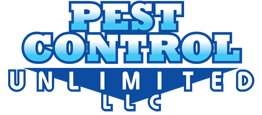Intense impacts explanations – The name or marking will contain proclamations that demonstrate which course of passage (mouth, skin, eyes, lungs) you should especially secure and what explicit move you want to make to keep away from intense impacts from pesticide openness. These assertions are perhaps on the front or sideboard of the name, or they might be elsewhere in the marking. The assertions will caution you assuming you might be hurt by gulping or breathing in the item or getting it on your skin or in your eyes. Numerous pesticides can cause intense impacts in more than one course, so concentrate on these explanations cautiously pest control chelmsford . These preparatory assertions let you know which parts of your body will require the most insurance.

“Risk: Fatal whenever gulped or breathed in” gives a far unexpected sign in comparison to “Risk: Corrosive – causes eye harm and serious skin consumes.” Delayed impacts proclamations – The marking of pesticides that the EPA considers to can cause postponed impacts should caution you of that reality. These assertions will let you know whether the item has been displayed to create some issues like cancers or regenerative issues in lab creatures. Unfavorably susceptible impacts articulation – If tests or different information demonstrate that the pesticide item can cause hypersensitive impacts, for example, skin aggravation or asthma, the item naming should express that reality. In some cases, the marking alludes to hypersensitive impacts as “sharpening.” Personal defensive gear articulations – Immediately following the explanations about intense, deferred, and unfavorably susceptible impacts, the naming for the most part records individual defensive hardware prerequisites. These assertions let you know the base individual defensive hardware that you should wear while utilizing the pesticide. Once in a while, the proclamations will require different individual defensive gear for various pesticide-taking care exercises. For instance, a cover might be required only during blending, stacking, or gear cleaning. Some of the time the assertions will permit decreased individual defensive hardware when you use security frameworks, like shut frameworks or encased taxis.
Natural Hazards
This part of the pesticide naming will show insurance for safeguarding the climate when you utilize the pesticide. Some general articulations show up on the marking of essentially every pesticide.
Most pesticide naming, for instance, will caution you not to debase water when you apply the pesticide or when you clean your hardware or discard pesticide squanders. The marking will contain explicit precautionary statements if the pesticide represents a particular peril to the climate. For instance, it might caution you that the item is profoundly harmful to honey bees or other untamed life.
Physical or Chemical Hazards
This segment of the pesticide marking will tell you of any extraordinary fire, blast, or compound dangers the item might present. For instance, it will caution you to assume the item is combustible to such an extent that you should be particularly mindful to get it far from the intensity or open fire or on the other hand assume that it is destructive to the point that it should be put away in a corrosion-resistant holder.
NOTE: The physical or compound hazard statements are not situated in a similar spot in all pesticide marking. Some naming gatherings them in a case under the heading “Physical or Chemical Hazards.” Another marking might show them on the front board of the mark underneath the sign word. Then again another naming might list the dangers in section structure under headings, for example, “Note” or “Significant.” If there are no strange physical or synthetic perils, there might be no explanation in the marking.







